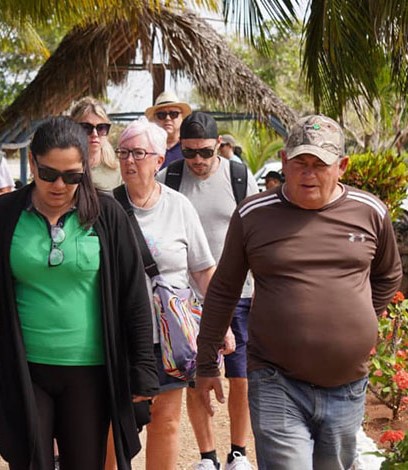
CIEGO DE AVILA, Cuba, Feb 26 (ACN) The progressive increase in the number of international visitors, mostly from countries like Canada and Russia, indicates the gradual recovery of nature tourism in the Moron Crocodile Farm, in the central province of Ciego de Avila.
Arley Romo Lopez, in charge of that center, told the Cuban News Agency that they have received in the current year more than 3,000 clients, arriving from the Jardines del Rey tourist destination and motivated by the work they do to reproduce and conserve the American crocodile (Crocodylus acutus), as well as the possibility of acquiring knowledge and interacting with these reptiles in their different stages of development.
A tour guide explains to customers the work carried out at the hatchery and the treatment given to the animals, including others such as jicoteas and hutias, which are incorporated to a lesser extent in the reproduction work, so that they also contribute to the conservation of these species of fauna.
Tourists also learn about the efforts to preserve animals that have been rescued after being damaged in their natural environment as a result of accidents and extreme hydro-meteorological phenomena.
The implementation of a survey system has allowed them to corroborate the high level of customer satisfaction, he said.
Romo Lopez stated that the center's key reason is to breed crocodiles, but they also carry out environmental education activities with foreign and national visitors, with the aim of making them aware of the need to participate in the protection of crocodiles and the other animals that inhabit the planet.
This center has three reproduction ponds that contain females and males, in a ratio of two to one, in that order; the eggs are collected and deposited in an incubator for a period of approximately 80 days.
The hatchlings are placed in starting areas and the remaining hatchlings are classified by age groups in different spaces, until they reach a size of approximately one meter and are transferred to the ponds to continue the reproductive cycle.
At the Moron hatchery, the number of these reptiles exceeds 950, in different stages of development, and for 2025 they plan an investment process aimed at building new ponds and repairing the hydraulic system, with the objective of increasing reproduction.
Sidebar

 Agencia Cubana de Noticias
Líder en información nacional
Agencia Cubana de Noticias
Líder en información nacional








Nos reservamos el derecho de no publicar los comentario que incumplan con las normas de este sitio